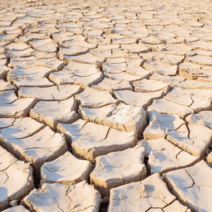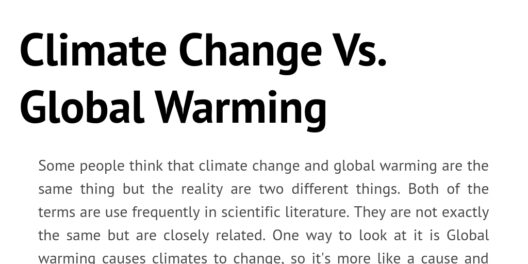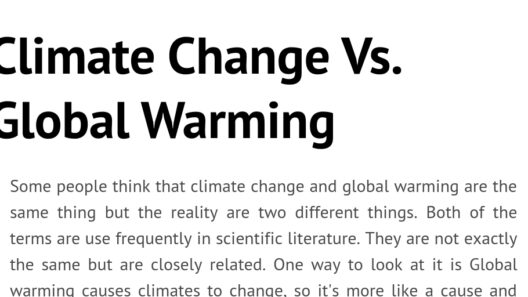The phenomenon of global warming is redefining the contours of seasonal experiences across the globe, particularly summer. As average temperatures creep higher, the implications extend beyond mere discomfort. They herald a profound transformation in ecosystems, human health, and even socio-economic conditions. This exploration delineates how global warming contours our summers, reshaping our interactions with the environment and compelling us to adopt a new mindset.
First, consider the undeniable increase in temperate averages. Projections indicate that summers are becoming significantly warmer. The past few decades have witnessed record-breaking heatwaves, and climatologists predict this trend will persist. Such elevated temperatures do not merely escalate feelings of heat but fundamentally alter the fabric of local climates. Increased heat intensity correlates with alterations in precipitation patterns, resulting in protracted droughts in some regions and heightened flooding in others. The juxtaposition of extremes signifies a notable climatic shift.
These changes have tangible ramifications for ecosystems. Flora and fauna are grappling with the relentless rise in temperatures. Species that once flourished in balmy summer conditions find themselves pushed to their thermal limits. The delicate balance of ecosystems is threatened as certain species migrate to cooler altitudes or latitudes, while others succumb to heat stress. For instance, coral reefs, often dubbed the rainforests of the sea, display alarming bleaching rates amidst escalating sea temperatures. This phenomenon not only jeopardizes biodiversity but also disrupts entire food webs, underscoring the interconnectedness of climate and life.
The human experience of summer is equally affected. Heat-related illnesses have surged in frequency and severity. Vulnerable populations—children, the elderly, and those with pre-existing health conditions—face heightened risks during sweltering months. Heatwaves can culminate in dire scenarios, leading to heat strokes or exacerbating cardiovascular and respiratory issues. The public health implications are staggering, placing additional strain on healthcare systems already burdened by routine demands.
Additionally, the impact extends to urban settings, where the heat island effect exacerbates the problem. Asphalt and concrete absorb and retain heat, causing cities to experience even higher temperatures than surrounding rural areas. This urban heat phenomenon can elevate energy demands for cooling, leading to increased greenhouse gas emissions, thereby perpetuating the cycle of warming. The psychological toll of relentless heat should not be overlooked; studies have indicated a correlation between increasing temperatures and rising incidences of anxiety and agitation among urban dwellers.
On an economic front, the ramifications of hotter summers are multifaceted. Agriculture, fundamentally reliant on climatic stability, stands at risk. Crop yields are sensitive to temperature fluctuations, and rising heat can lead to diminished outputs for staple foods. For instance, wheat and corn, essential for global food security, show decreased productivity under prolonged heat stress. This may incite food inflation, stressing economies worldwide, especially in regions that are food importers. Farmers must adapt to changing landscapes, employing innovative agricultural practices or investing in heat-tolerant crop varieties to sustain their livelihoods.
Yet, amidst these challenges, there lies opportunity. The urgency summoned by global warming can catalyze a renaissance of innovation. Renewable energy technologies, particularly solar power, have burgeoned during this era. Summer’s prolonged sunlight serves as an inexhaustible energy source to harness. The shift towards solar energy not only mitigates our carbon footprint but also diminishes reliance on fossil fuels. As our summers heat up, so too can our ingenuity.
Moreover, there is an emerging consciousness regarding environmental stewardship. Communities are increasingly advocating for sustainable practices, whether it be through enhanced recycling programs, urban greening initiatives, or the promotion of public transportation. Resilience is taking root; individuals and groups are recognizing the importance of adapting to changing climatic conditions. This proactive stance facilitates communal cohesion and empowers citizens to shape their environments in ways that counteract the adverse impacts of global warming.
Education plays a pivotal role in shifting perspectives. As awareness of global warming and its ramifications on summer grows, people are propelled toward collective action. Campaigns that emphasize the interdependence between human behavior and climatic conditions encourage not only awareness but also responsibility. Individuals are being called upon to reassess their contributions to greenhouse gas emissions, whether through diminished reliance on single-use plastics or embracing sustainable lifestyle choices, thus fostering a symbiotic relationship with nature.
Moreover, as we navigate the tumultuous waters of climate change, adaptation becomes indispensable. Communities must rethink their infrastructures, integrating green solutions that promote resilience. Urban planners are increasingly adopting strategies that incorporate natural landscapes—like permeable pavements and green roofs—into city designs. Such approaches not only combat urban heat but also bolster biodiversity and create vibrant public spaces, enhancing the quality of life.
In conclusion, global warming is reconfiguring our summers in profound ways. The warmth that once signified joy and leisure now carries a weighty complexity, entwining health, economy, and environmental dynamics. While the challenges are formidable, they also present fertile ground for innovation and collective action. Embracing sustainable practices, fostering resilience, and enhancing awareness can enable societies to adapt proactively to this new summer reality. By reshaping our perspectives, we can transform the narrative from one of despair to a tale of hope and evolution, ensuring that the future of our summers remains bright, albeit different.






